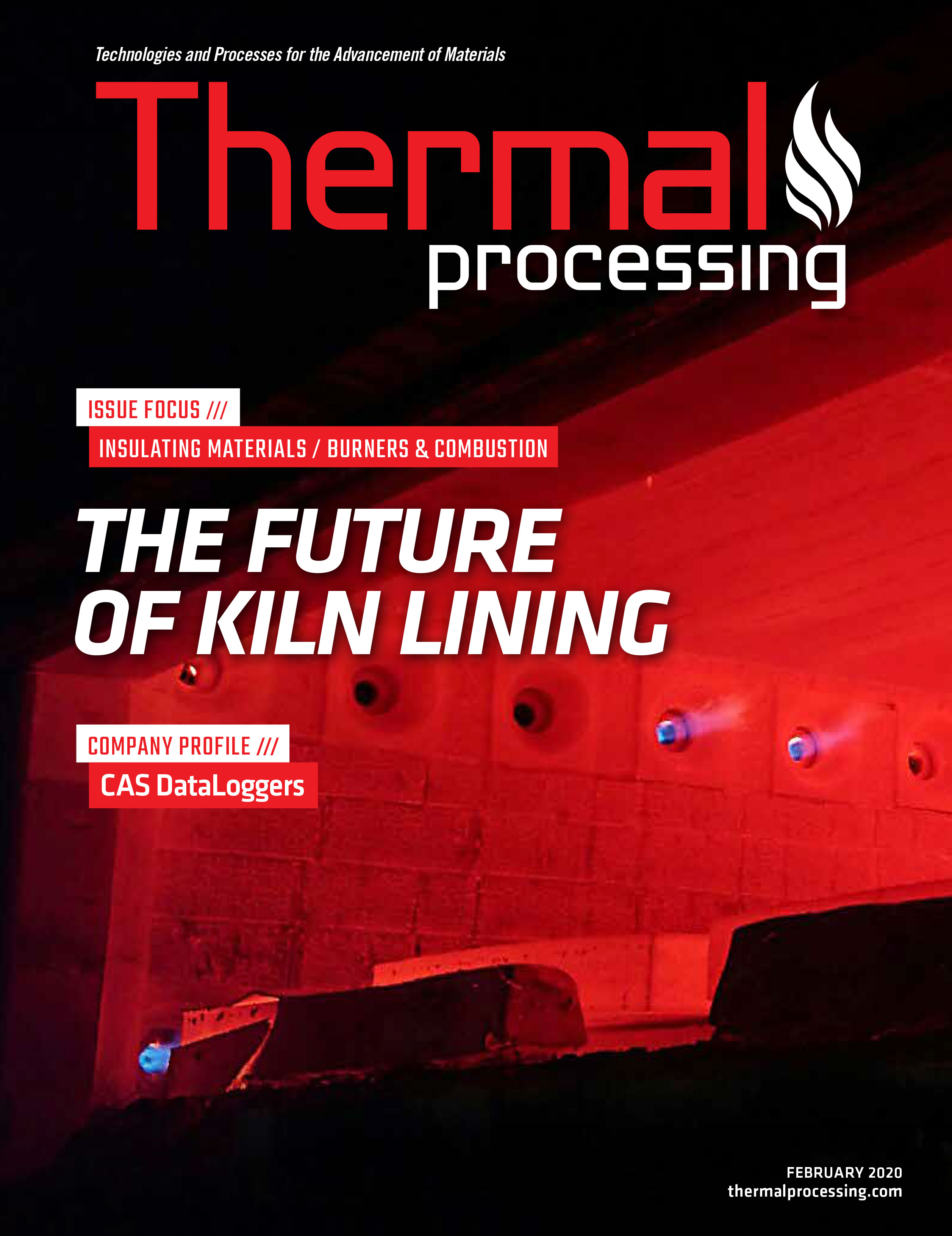
As heat treaters, we must admit that, at the end of the day, what we feel we are paying for is a certification that reflects a conforming product or work performed (service). This by no means down-plays the importance of the physical work performed to get there. Just that, to ensure the work was performed and that the results are conforming, we examine the certification(s) associated with that work. The practice of reviewing certifications related to heat treat is essential to verify conformance during internal and third-party audits.
Flow Down of Requirements
While we may depend on suppliers to be the experts, we are obligated to flow down the requirements we choose to set forth. In other words, it would do a heat-treat supplier no good to state on a purchase order, “perform a temperature uniformity survey in accordance with AMS2750” to a pyrometry service provider. As heat treaters, we must take ownership of any product or service we choose to outsource, making the flow down of detailed specific requirements essential. In this case, it would be better to reference an internal procedure which describes the variables associated with pyrometry service in accordance with AMS2750 to the pyrometry service provider.
It is, of course, important to understand our own requirements as they are flowed down to use (i.e. print, PO, specifications, etc.). This may include industry specifications, prime (customer) specifications, as well as your own requirements. These should have already been detailed in an internal procedure, so in that case, we will save that topic for another day. Let’s assume heat treaters have interpreted their associated requirements and have documented them in an internal procedure.
The flow down of requirements for any service or product will typically take two forms; referencing an internal procedure or documenting the specific requirements within the purchase order itself. Throughout my consulting I notice that the method used will depend greatly on the system used within purchasing. Some purchasing programs have standard remarks which outline basic purchase requirements and will, at times, include specific requirements for the product or service listed. These specific requirements are derived from internal procedures and specifications. While this can work well when controlled, it can tend to present issues when requirements have changed. For example, if a purchase order to a masking supplier has the specific chemistry requirements within the standard remarks of the PO and the chemistry requirements change within the internal procedure, someone must request that the standard remarks within the purchase order be modified as well. If the necessary changes are not made, the purchase order may flow down obsolete requirements and the results may not be conforming to the new requirements.
Flowing down of specific requirements on a purchase by stating an internal procedure can mitigate that potential issue. Revision control of the relevant internal procedure should also be flowed down on the purchase order as this can assist in the correct requirements being flowed down. This would require the purchaser to send a copy of the procedure or a copy of the relevant section of the procedure referenced. Of course, many heat-treat suppliers have a purchasing system that may include engineering, quality, and manufacturing approval, which, in turn, will help mitigate potential issues. If you find you do not have a purchasing system in place that includes approval steps, it may be something to explore and implement.
Verifying Certification Requirements
The verification process is typically the last step before the certification is kept on file and, perhaps at some point, presented to an internal or external auditor. In the context of conformance, the importance of certification review cannot be over-stated.
The verification process should be performed by an employee who is familiar with the requirements as they are flowed down. At times, I see that a receiving clerk is signing off certifications as “reviewed.” In this case, I would be obligated to identify training the receiving clerk received in order to justify this. Another way to handle this would be to have the receiving clerk merely receive the paperwork (verify quantity, etc.) and have someone from quality/engineering verify the certification associated with the product or service is conforming. The key to this is that the person verifying compliance of certifications has a documented training record that indicates they are familiar with the process/service/product provided and its associated requirements.
To ensure the specific requirements have been met and are documented on the certifications, some suppliers choose to implement checklists. Checklists may be designed for a specific test performed or product received. For example, a pyrometry checklist used to verify certification conformance to AMS2750 may be like what is shown in Figure 1. Each test described in AMS2750 has its own section assigned with variables for each test.
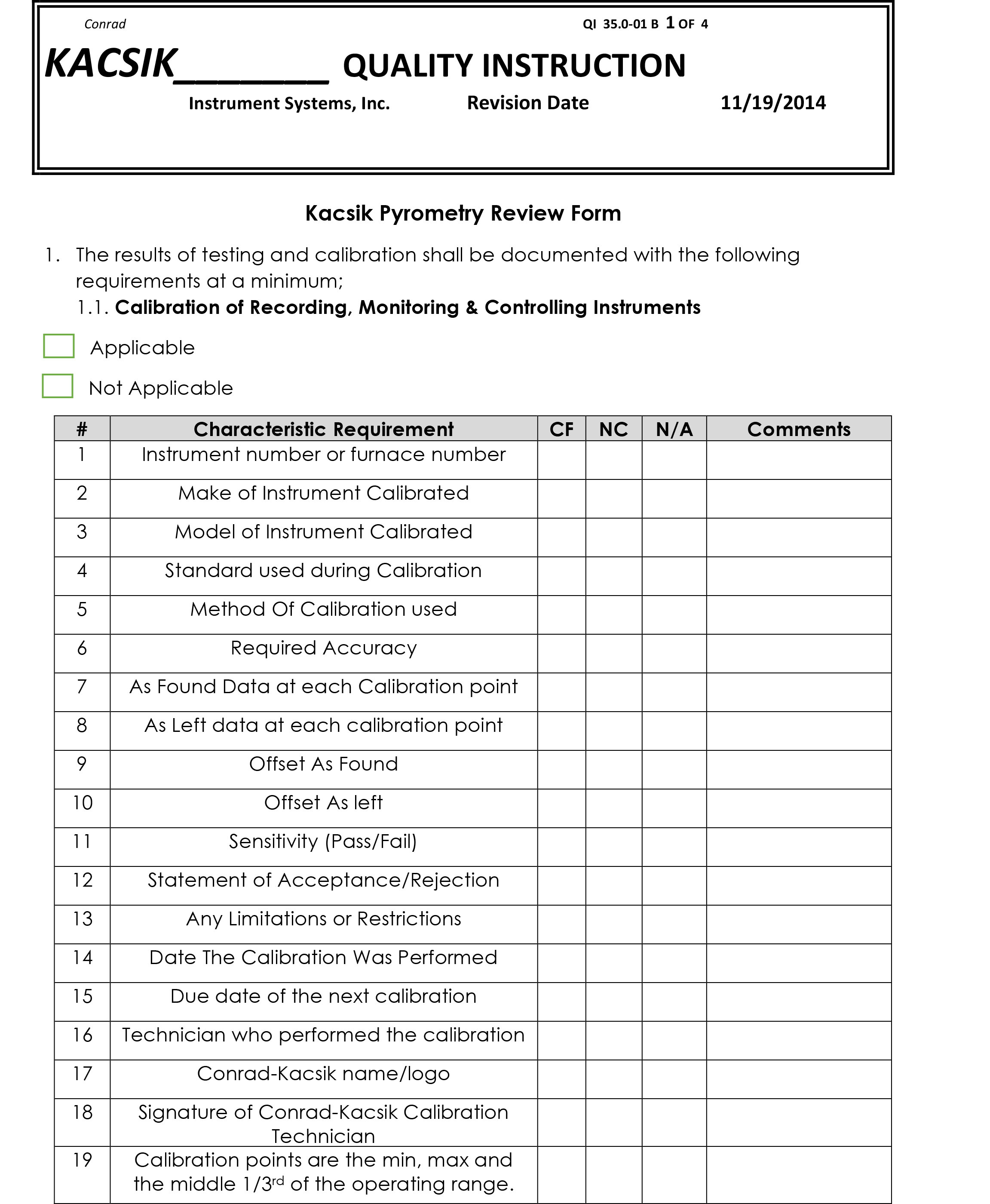
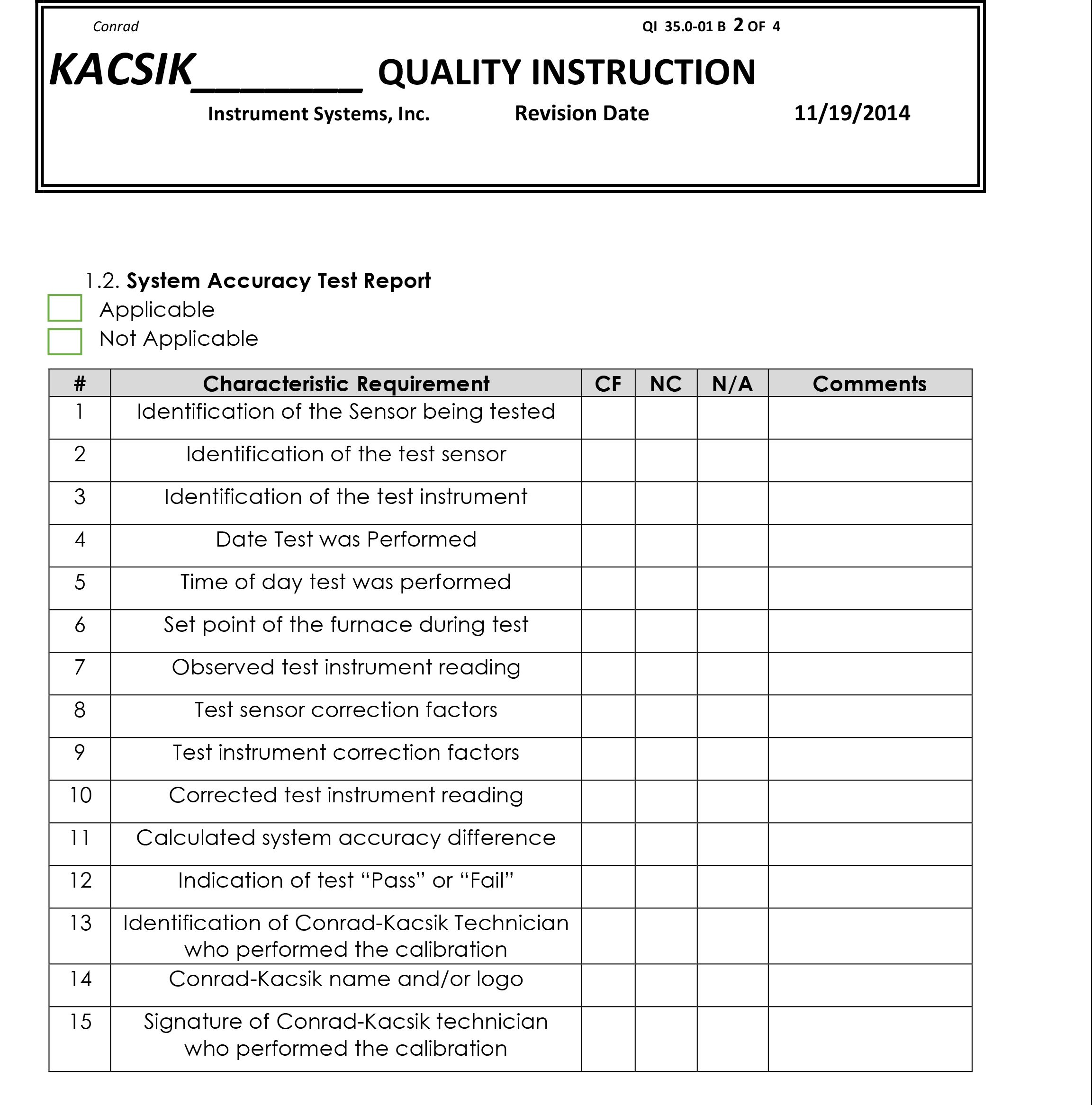
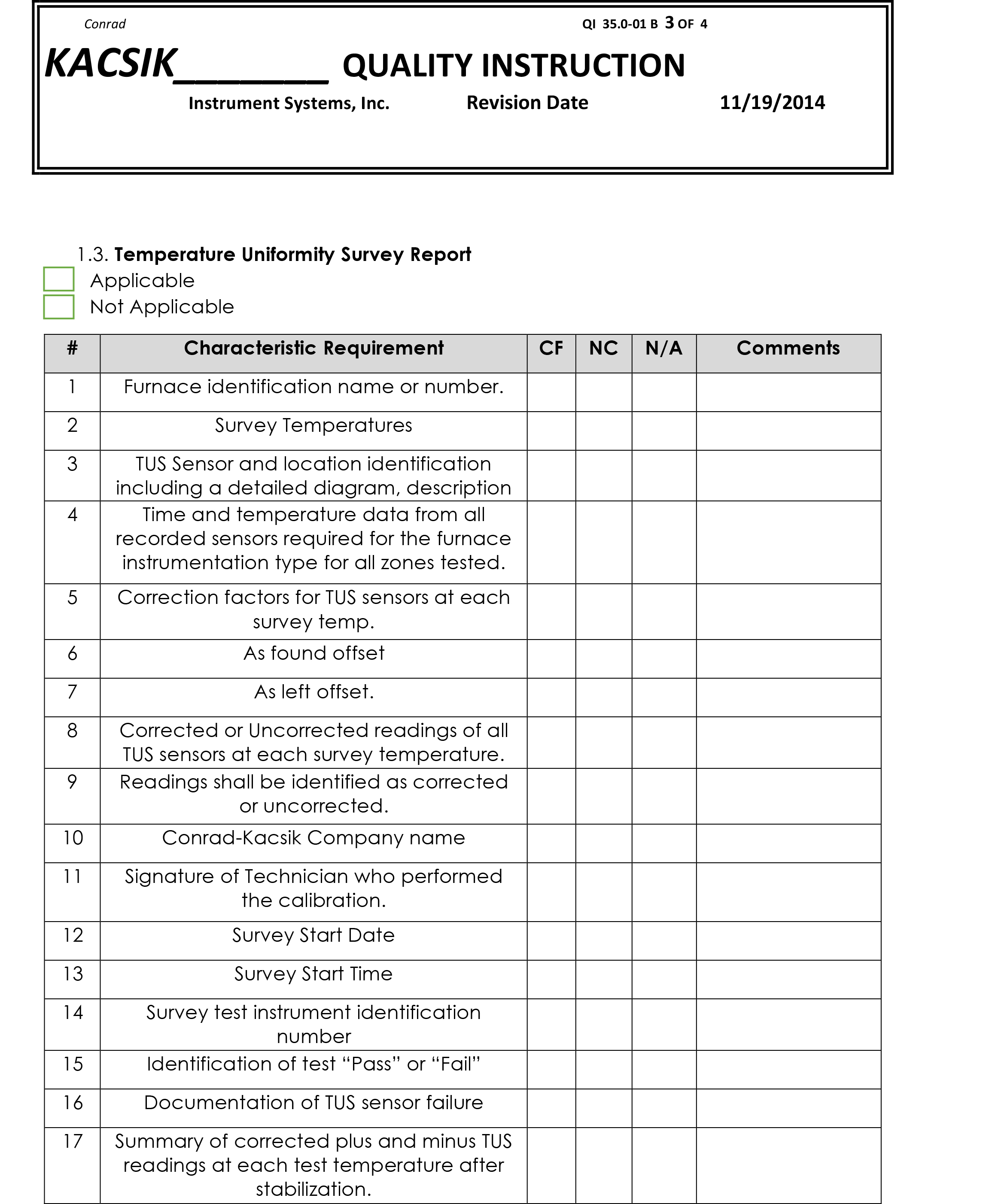
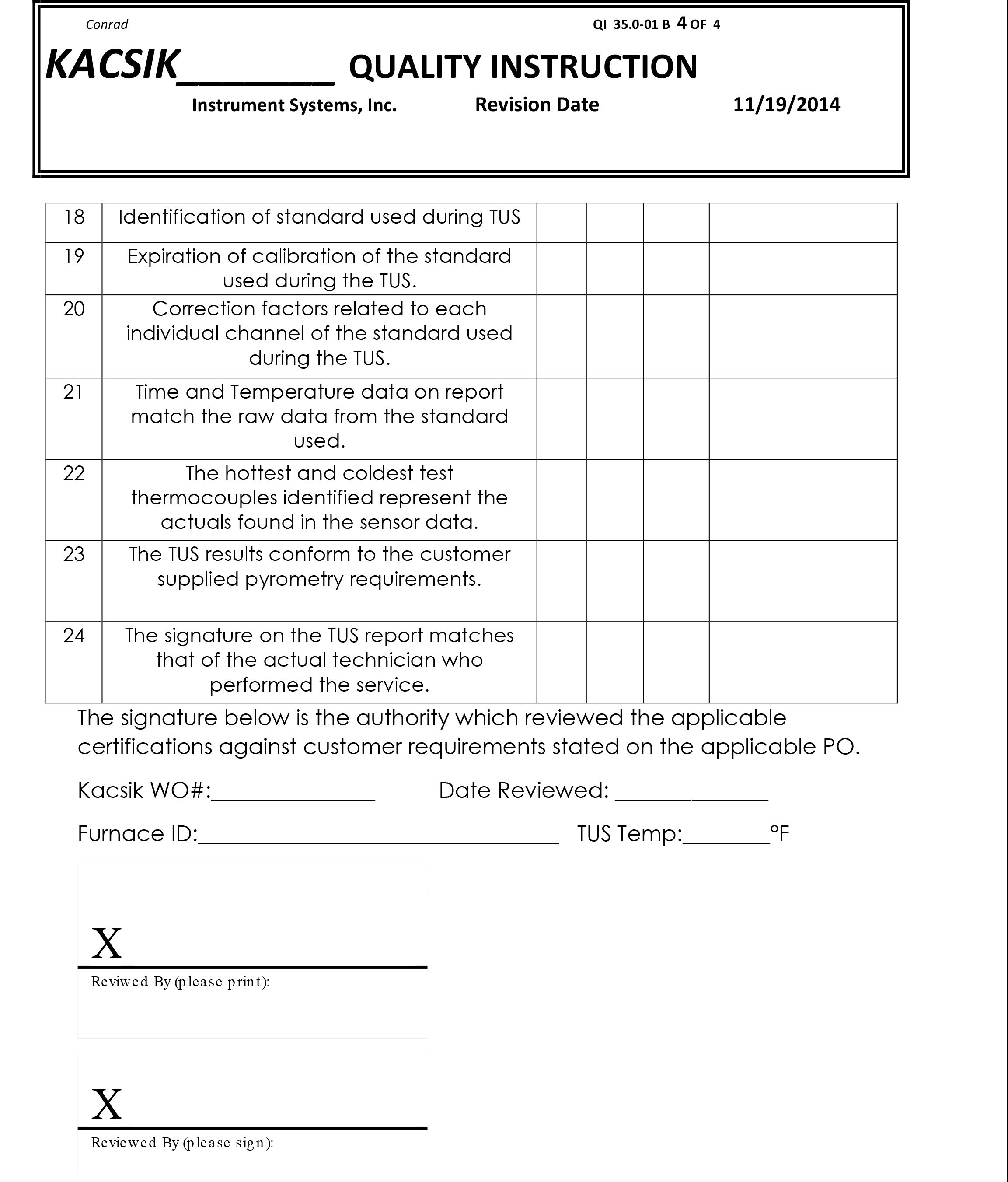
Documentation of the review process varies depending on the systems implemented. Some suppliers may use a stamp with a date, others may use a stamp and hand write the date. More electronic-based systems will use anything from an electronic signature to a PDF stamp.
Once the evidence of review has been documented, again, depending on the quality system implemented, the paperwork may be saved electronically, or a hard copy filed away for a predetermined amount of time. Regardless, the documents should be able to be retrieved when requested by a purchaser or auditor.
Summary
Documentation of conformance should be clear on certifications supplied. The review process should be robust enough to ensure conformance, as this will be key to eliminating variables when problems arise. Moreover, products and equipment that have been serviced should not be used until the review process is completed.











